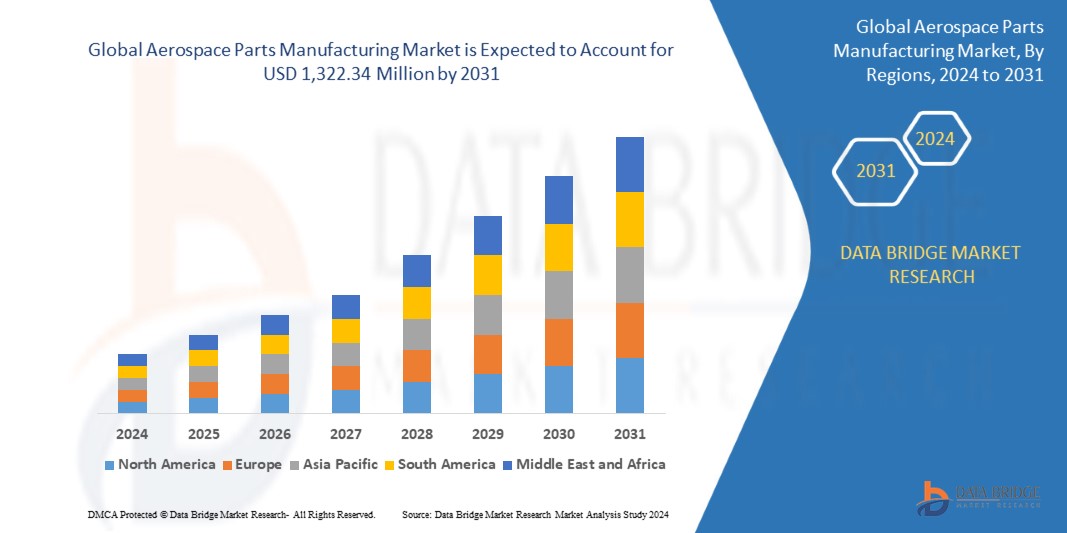Aerospace parts manufacturing plays a critical role in shaping the future of aviation, space exploration, and defense. From high-performance jet engines to durable satellite components, aerospace manufacturers are responsible for producing parts that meet stringent safety, precision, and performance standards. This blog will explore the aerospace parts manufacturing industry, including trends, key materials, manufacturing processes, challenges, innovations, and the industry’s future.
Overview of the Aerospace Parts Manufacturing Industry
Aerospace parts manufacturing involves producing complex and highly precise components used in aircraft, spacecraft, defense systems, and related applications. This sector supports the commercial aviation industry, space missions, and military operations, with manufacturers producing parts that range from turbine blades and avionics components to wings, fuselages, and landing gears.
The aerospace industry is divided into several categories:
- Commercial Aviation: Involves manufacturing parts for commercial aircraft used by airlines.
- Military Aviation: Produces components for fighter jets, drones, and other defense-related aircraft.
- Space Exploration: Focuses on manufacturing parts for satellites, space vehicles, and launch systems.
- General Aviation: Includes parts for private and recreational aircraft.
Key Materials in Aerospace Parts Manufacturing
Materials used in aerospace must be lightweight, durable, and capable of withstanding extreme conditions such as high temperatures, pressure, and environmental stressors. Common materials in aerospace manufacturing include:
1. Aluminum Alloys
- Properties: Lightweight, corrosion-resistant, and cost-effective.
- Applications: Primarily used in airframes, wings, and structural components.
2. Titanium Alloys
- Properties: High strength-to-weight ratio, corrosion-resistant, and high-temperature tolerance.
- Applications: Common in jet engines, landing gears, and other critical components.
3. Composites
- Properties: Lightweight and exceptionally strong, often with added thermal and electrical insulation properties.
- Applications: Widely used in fuselages, wings, and high-performance parts like engine nacelles.
4. Stainless and Alloy Steels
- Properties: Highly durable and resistant to fatigue and corrosion.
- Applications: Used for high-stress parts, including fasteners, landing gears, and structural components.
5. Superalloys
- Properties: Retain strength and stability at high temperatures.
- Applications: Essential in jet engines and turbine parts, where components face extreme heat.
6. Ceramics and Glass-Ceramics
- Properties: High heat resistance and thermal stability.
- Applications: Often used in thermal protection systems for spacecraft and in exhaust systems.
Core Manufacturing Processes in Aerospace Parts Production
Aerospace parts manufacturing relies on a variety of specialized processes to create components that meet precise standards. Each process is chosen based on the material, part requirements, and operational demands. Key processes include:
1. CNC Machining
- Description: Computer Numerical Control (CNC) machining involves automated milling, turning, and grinding.
- Applications: CNC machining is essential for producing precise metal and composite parts, especially for engine components and structural parts.
2. 3D Printing (Additive Manufacturing)
- Description: Creates parts layer-by-layer from digital models, allowing for complex designs and lightweight structures.
- Applications: Increasingly popular for prototype development and production of complex, lightweight parts like brackets, housings, and even some engine components.
3. Forging and Casting
- Description: Forging shapes metal by compressing it under high pressure, while casting involves pouring molten metal into molds.
- Applications: Used to produce high-strength, high-stress components like landing gears, engine casings, and turbine blades.
4. Composite Layup and Filament Winding
- Description: Involves layering composite materials to create strong, lightweight parts, often reinforced with carbon fiber or glass fibers.
- Applications: Common for fuselages, wings, and aerodynamic surfaces.
5. Heat Treatment
- Description: Heating and cooling metals to improve hardness, durability, and other properties.
- Applications: Often used for steel, aluminum, and titanium parts that need enhanced strength for high-stress applications.
6. Surface Treatment and Coating
- Description: Adds protective coatings to parts, enhancing corrosion resistance, wear resistance, and performance.
- Applications: Essential for parts exposed to high temperatures, friction, and environmental exposure, such as turbine blades and airframes.
Innovations Shaping Aerospace Parts Manufacturing
Several emerging technologies and techniques are driving innovation within aerospace parts manufacturing:
1. Additive Manufacturing for Production-Ready Parts
- Advances: 3D printing has progressed beyond prototyping, with aerospace manufacturers now using it to produce end-use parts. This reduces waste, cuts lead time, and enables complex geometries.
- Example: GE Aviation’s LEAP engine uses 3D-printed fuel nozzles, which are lighter and more durable than traditionally manufactured versions.
2. Automation and Robotics
- Advances: Robotics and automated systems enhance precision, reduce labor costs, and improve efficiency, especially in CNC machining, inspection, and material handling.
- Example: Robotics is often used for precise assembly tasks and inspection, ensuring parts meet strict aerospace standards.
3. Digital Twin Technology
- Advances: Digital twins create virtual replicas of physical parts, allowing for simulation, testing, and real-time monitoring.
- Example: Boeing uses digital twins to predict aircraft part performance and reduce maintenance requirements.
4. AI and Machine Learning in Quality Control
- Advances: AI algorithms analyze data from the production process to detect defects and optimize manufacturing parameters.
- Example: Machine learning can analyze sensor data from manufacturing equipment to ensure optimal operating conditions.
5. Lightweight Material Development
- Advances: Research is ongoing to develop new materials that offer the strength and durability needed for aerospace while being lighter than existing options.
- Example: Boeing and Airbus continue to explore advanced composites and high-performance alloys that enhance aircraft fuel efficiency and reduce emissions.
Key Challenges in Aerospace Parts Manufacturing
Despite its advanced technology and precision, aerospace parts manufacturing faces several challenges:
1. Stringent Regulatory Standards
- Aerospace manufacturers must adhere to strict regulations set by organizations like the FAA and EASA, which can make compliance complex and costly.
2. Supply Chain Management
- Supply chain disruptions can delay production, increase costs, and impact the availability of key materials like titanium and composites.
3. Cost Pressures
- The demand for lighter, more efficient components often involves high-cost materials and advanced manufacturing processes, creating cost challenges for manufacturers.
4. Workforce Shortages
- Aerospace manufacturing requires specialized skills, and a shortage of skilled workers can limit production capabilities and slow down innovation.
5. Environmental and Sustainability Concerns
- As the industry seeks to reduce emissions and environmental impact, manufacturers must adopt more sustainable practices and materials, which can involve additional costs and logistical hurdles.
Future Trends in Aerospace Parts Manufacturing
The aerospace parts manufacturing sector is set to experience significant evolution in the coming years. Key trends shaping the future include:
1. Green Manufacturing Initiatives
- Sustainable practices, such as using eco-friendly materials and reducing energy consumption, will become increasingly important as aerospace companies focus on reducing their environmental impact.
2. Increased Use of Autonomous Systems
- Autonomous manufacturing systems and AI-driven decision-making will further streamline production, optimize resource use, and improve quality control.
3. Expansion of Additive Manufacturing
- As 3D printing technology continues to advance, its application in producing critical aerospace components will expand, potentially transforming supply chain dynamics and reducing reliance on traditional machining.
4. Investment in Hypersonics and Space Exploration
- The growing interest in hypersonic flight and commercial space travel is creating new demands for parts that can withstand extreme speeds and atmospheric conditions.
5. Collaborative Innovation in R&D
- Partnerships between aerospace companies, universities, and research institutions are driving innovations in materials science, AI, and manufacturing techniques, accelerating the development of next-generation parts.
Conclusion
Aerospace parts manufacturing is a cornerstone of the aviation and space industries, enabling advances in safety, efficiency, and performance. The integration of digital technologies, automation, and sustainable practices is driving unprecedented change, positioning manufacturers to meet the evolving needs of commercial aviation, defense, and space exploration. As the industry continues to innovate, aerospace parts manufacturing will remain central to shaping the future of flight and expanding humanity’s reach beyond the skies.




